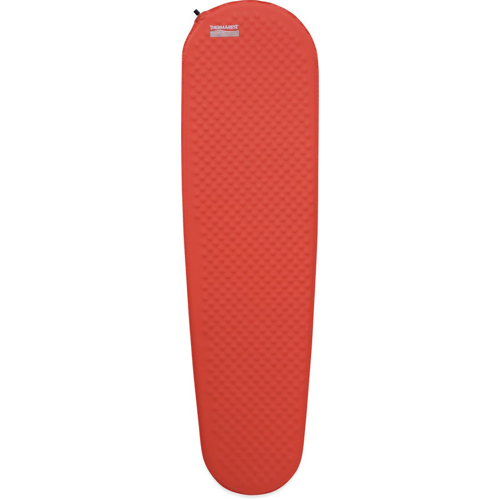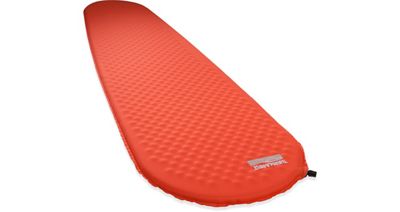
The Therm-a-Rest Prolite is a self-inflating sleeping pad with an R-value of 2.4, good for use down to 20-30 degrees fahrenheit. While self-inflating sleeping pads are not nearly as popular as they were 20 years ago, they are more durable and resilient than inflatable sleeping pads, and much less expensive.
If you've never used a self-inflating pad like the Therm-a-Rest Prolite, it's basically an inflatable pad with an open-cell foam pad inside. Open cell foam compresses because it has air channels running through it. It also has a "memory", so it will expand after it's been rolled up. This is different from the closed cell foam that many sleeping pads are made with, like the Therm-a-rest Zlite or the Ridegrest which can't be compressed to make them smaller.
The open cell foam in the Prolite is covered on both sides with a face fabric and sealed around the perimeter of the foam. A stick valve is then added to the side of the pad, which lets air escape from the interior when the pad is rolled up. When the pad is unrolled, the open cell foam expands, pulling air through the valve and inflating itself. If you want to make the pad firmer, you can top if off with a few breaths (really, just a few) or let some air out to make the mattress softer. If you hate blowing up your inflatable sleeping pad, a self-inflating pad might be a good alternative.

When fully inflated, the Prolite is 1″ thick, compared to a Therm-a-rest NeoAir Xlite which is 2.5″ thick or a Therm-a-rest ZLite, which is 0.75″ thick. Now, some people find the padding provided by a Prolite to be sufficient and other's don't. I can sleep well on a Prolite without any issues, but I'm usually so exhausted from backpacking all day, that sleeping well is not a problem. I'm a side sleeper, a back sleeper, and a thrasher, and there's still sufficient padding for me to stay comfortable.
One of the things that I like about the Prolite is that it's available in a wide variety of lengths and gear weights. For instance, sleeping on a shorter pad is a common trick used by ultralight backpackers to reduce gear weight, since your legs need less insulation than your torso for 3 season camping. To insulate your legs, you can simply prop them on top of your backpack and spare clothing and that is sufficient to keep them warm.
- Extra-small: (9 oz) – 36″ x 20″
- Small: (12 oz) – 47″ x 20″
- Regular (18 oz) – 72″ x 20″
- Large : (24 oz) – 77″ x 25″
This means you can enjoy the improved comfort that a Prolite provides compared to a foam sleeping pad with little weight penalty. For instance a 47″ long Prolite weighs 12 oz, while a 72″ long Therm-a-Rest Zlite foam pad weighs 14 oz, a weight savings of 2 oz.

A 47″ Prolite also stacks up well against a 47″ Therm-a-Rest NeoAir XLite or a 48″ NEMO Tensor, which only weigh 2 and 3 oz less, but are far less durable. If you've ever poked a hole or sliced open the face fabric on an inflatable sleeping pad, they're useless in terms of sleep insulation. But if you hole a Prolite, the inner foam will still provide you with enough insulation to get through the night. This improved durability is one reason why hard core backpackers carry a Therm-a-Rest Prolite instead of an ultralight inflatable sleeping pad. Desert thorns and old nails in lean-to floors can't penetrate its face fabric, but they'll pop most inflatable sleeping pads like a cheap balloon.
Therm-a-Rest provided the author with a Prolite sleeping pad for this review.
Compare 4 Prices
The post Therm-a-Rest Prolite Self-Inflating Sleeping Pad Review appeared first on Section Hikers Backpacking Blog.
from Section Hikers Backpacking Blog https://ift.tt/2Kd9aox








No comments:
Post a Comment